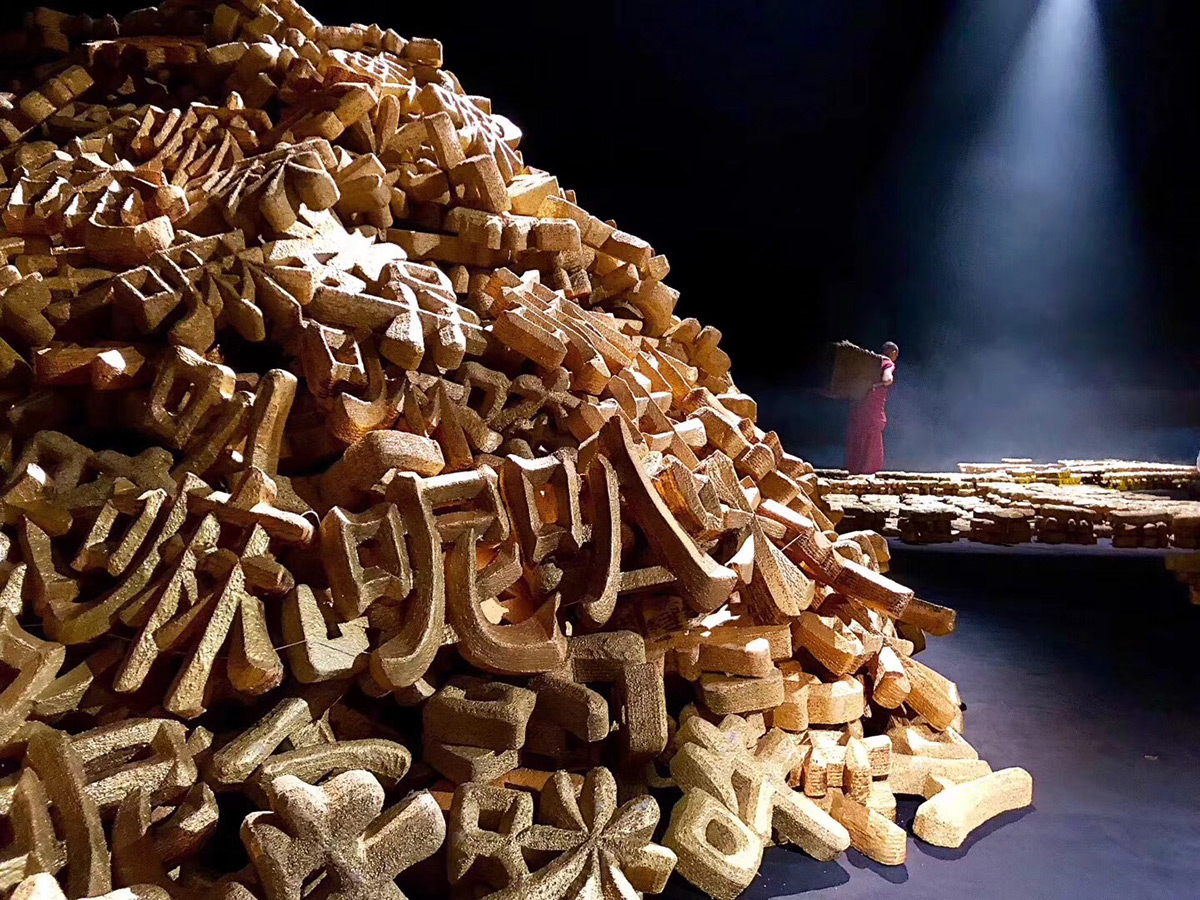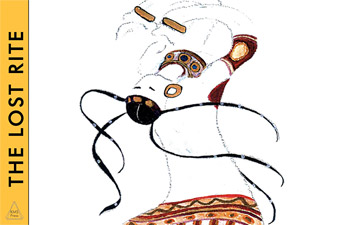
© Li Yijan. (Click image for larger version)
Yang Liping
Rite of Spring
★★★✰✰
London, Sadler’s Wells
9 May 2019
www.facebook.com/yanglipingdance
www.sadlerswells.com
There’s a recurring motif of fragile, flitting hand gestures in Yang Liping’s new production, Rite of Spring. The dancers wiggle and shiver their fingers, flexing their wrists and cupping their palms. Sometimes they resemble feathers fluttering in the breeze; other times they’re claws warding off threats. It’s a fitting image, given Liping’s reputation in China as the ‘Peacock Princess’. The choreographer is famous across her homeland for her peacock dance, a regional Asian folk dance and the inspiration for Liping’s signature work, Spirit of the Peacock, first shown in 1986. Her new show invokes this ancient custom, as well as another, more modern dance tradition: Igor Stravinsky’s sensational 1913 score, The Rite of Spring, the basis for countless choreographies over the past century, from Vaslav Nijinsky’s inaugural production to Kenneth Macmillan’s 1962 ballet rendition. Liping’s interpretation, shown here at Sadler’s Wells, comes just weeks after English National Ballet restaged Pina Bausch’s 1973 version at the same venue.
As with most retellings, Liping’s centres on a young woman destined to dance herself to death. However, the dancemaker has invoked Buddhist principles, including the concept of reincarnation, to recast this pagan rite as a voluntary sacrifice. Here the Chosen One (Maya Jilan Dong) is a figure of salvation, an earthly being who ascends to a higher plane by embracing her spiritual destiny. A dozen female dancers illuminate her deliverance, while two individuals abet it: a monk who deciphers the prophecy and a shaman who enacts it. Xiaofan Feng’s monk lopes around the stage for much of the 70-minute show, a mostly superfluous figure tasked with arranging bricks of Chinese characters into various stacks and scripts. Da Zhu’s shaman, on the other hand, is cutting and robust, emerging from a disembodied dragon’s head to dole out sharp, eye-grabbing contemporary moves.
It’s some time before we hear the lurching strings of Stravinsky’s score. Instead, the show starts with a rumbling soundscape that mixes eerie whispering and Tibetan chants with zaps of electronica. Tim Yip, the award-winning art director behind Crouching Tiger, Hidden Dragon, goes in for some intense elements of design. The stage is heaped with piles of Chinese characters; a gleaming golden bowl scoops the back wall; smoke and electric blue rays engulf the dancers. The costuming – a whirl of glittering headpieces and jewel-toned unitards – heightens the theatrics, as does the dragon, a beastly extravaganza covered in ragged locks.
Early dance phrases are tranquil and glossy, the dancers spiraling their arms into sinuous curlicues – a tidy show of avian elegance. After Zhu’s arrival, the movement style transitions to something more carnal, the troupe thrusting their pelvises and contracting their torsos. This provocative physicality peaks with a graphic tussle between Zhu and Dong, a slow-burning, uncomfortable exchange of contortions and gyrations.

© Li Yijan. (Click image for larger version)
From here a recording of the score as we know it kicks in, and a frenzied primitivism takes over. The female dancers writhe and convulse, running themselves ragged as the music intensifies, while Zhu performs a righteous solo of jolting hitch-kicks. The agitated energy recalls Bausch’s visceral Rite of Spring, with its ruthless men and flocks of nervous women. There’s also a whiff of Giselle in the ensemble’s flying hair and echoes of Swan Lake in Zhu’s dark, stringy costume, which positions him as the evil Rothbart to their pretty peacocks. The tension is exciting, but it complicates the supposed serenity of the Chosen One’s sacrifice. When she’s stuck with a fateful Chinese character on her chest after it fails to adhere to anyone else, her danse macabre doesn’t feel like an offering so much as surrender.
Still, Dong’s performance is compelling, evoking the urgency of her self-choreographed solo Whip, shown in a 2018 Sadler’s programme assembled by Akram Khan. Heaving herself back and forth, she presses along until she’s engulfed by the dragon and extinguished from this earth. The show doesn’t end here, though. After the Chosen One’s death are several long phrases that reprise the ghostly music of the beginning and culminate in her reincarnation as a pure, floating goddess. These final segments are a vehicle for some interesting choreography, but they drag on, diluting the intensity of our heroine’s demise.
Liping’s production is an exciting piece of theatre, particularly from a visual perspective. The show plunges us into darkness at various points, each time revealing a gripping new spectacle, including an intriguing vertical formation of creepy-crawly body rolls and gravity-defying tilts (helped along by the use of foot braces attached to the stage). It’s let down by its protracted ending, and by its fussy costuming, which produces some unfortunate snafus like headpieces knocked loose and fan skirts that fail to deploy. At the same time, it brings energetic performances and a stimulating new take on an age-old story.

















You must be logged in to post a comment.